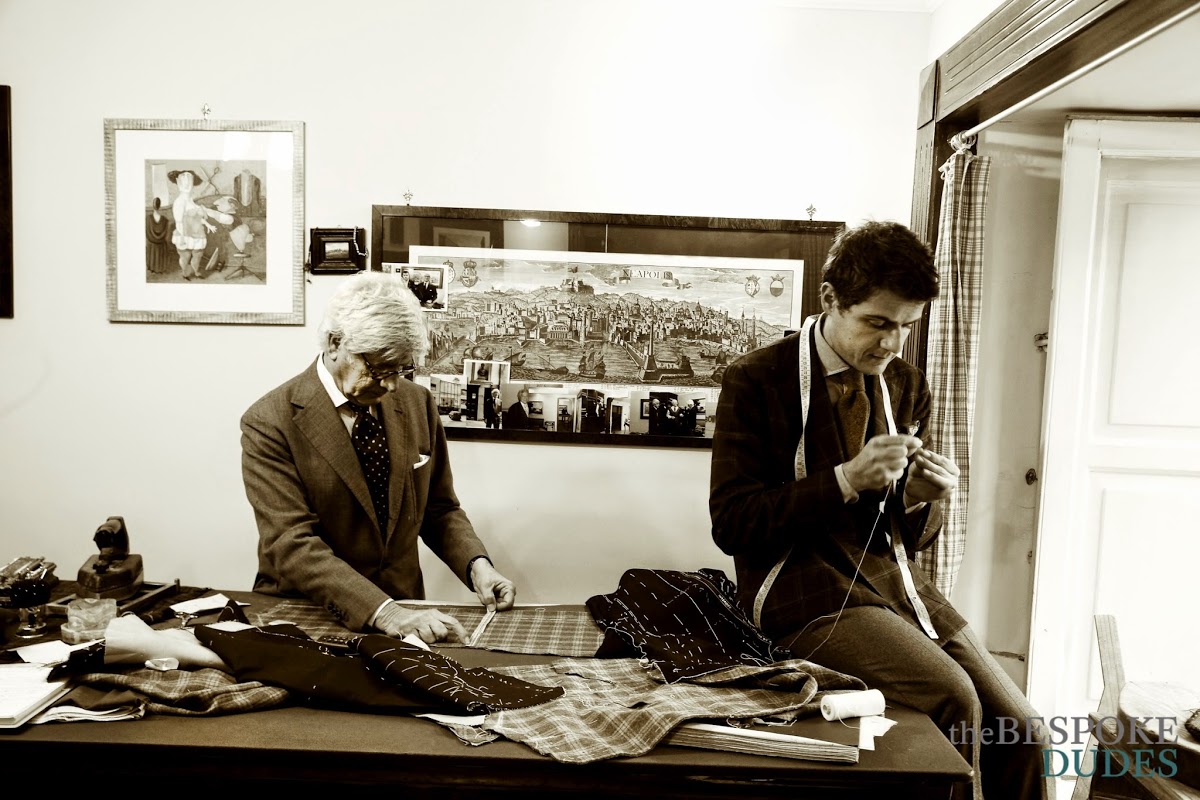First of all, the Neapolitan tailoring school comes to light in a city that was the capital of male elegance and pioneer of a lifestyle that later will be copied in Paris and Rome. At those times, Naples was the city where the taste of English gentlemen was meeting the preserved artisanal skills of its inhabitants. This peculiar context brought to light a taste that will find its highest expression in the Neapolitan jacket, which for a long time was the one and only competitor of the British one. The former was light, with almost no canvas inside, soft and relaxed. The latter, coming from the military tradition, was rigid like an armour. As for the jackets, Vincenzo Attolini is unanimously considered the father of the Neapolitan tailoring. Reportedly, he was the first one to make jackets as light as shirts, with no shoulder padding inside. Other famous and historic names are Blasi and Rubinacci who have been like schools for a lot of artisans who afterwards started their own business. Today some of them are still on the market, others decided to turn their atelier into a factory, losing the poetry coming from the true “bespoke”. The word “bespoke” comes from the British tradition and means “custom-made”. It indicates the activity of a tailor who makes a suit for a customer, entirely by hand, starting from the cut of the fabric. Watch out: the true bespoke implies that every customer has his own paper model, created by the tailor after taking the measurements for the first time. Distinctive features of the Neapolitan tailoring tradition are the following: the single-breasted jacket features three-rolled-two buttons, high collar, deep side vents, mappina sleeve (small folds on the seam between the shoulder and the sleeve), pignata patch pocket (a peculiar shape, similar to a pot), light canvas inside, half or no lining, front dart till the bottom, boat-shaped breast pocket, one sleeve button for the sportive blazer and two non-overlapping buttons for the suit. The same “mappina stitching” can be found in some cases also on the sleeves and cuffs of the shirts. The Neapolitan suit comes to light with the flaw, it is not perfect like the off-the-peg one, that must be worn by everyone. It follows the shape of the customer, enhancing his qualities and hiding any possible physical flaw. This is the so-called “charm of the imperfection”. Written by Fabio Attanasio – author of the blog thebespokedudes.com

